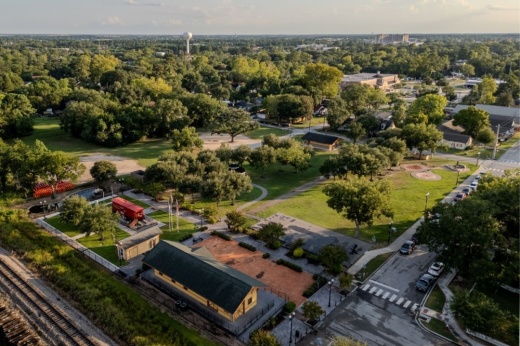The city of Tomball’s newly adopted comprehensive plan serves as a long-term blueprint for managing the city’s growth, guiding development and shaping infrastructure over the next five to 10 years.
The plan reflects community input gathered through surveys and open houses, and focuses on areas such as future land use, economic development and transportation and mobility, per the plan. The last comprehensive plan was adopted in 2019, and the new plan was approved this June.
City leaders said the document will be used as a policy guide to inform rezoning, infrastructure investments and future development decisions.
“It’s not just a vision—it’s a tool,” former Assistant City Manager Jessica Rogers said.
The big picture
Tomball’s new comprehensive plan sets course for expanding the city’s economic base while maintaining its small-town charm, Mayor Lori Klein Quinn said. The plan highlights two focus areas for future business growth and redevelopment, and reinforces ongoing efforts to attract new employers and diversify the city’s economy, said Kelly Violette, executive director of the Tomball Economic Development Corp.
“We’re looking at ways to strengthen our job base and bring higher-paying positions to Tomball,” Violette said.
The comprehensive plan calls for expanding the Medical District, positioned along Business 249, as a hub for health care and supporting uses such as hotels, restaurants and professional offices.
The plan also emphasizes the revitalization of Old Town Tomball, calling for public art, placemaking and infrastructure improvements through partnerships such as the Heart of Tomball Alliance, which aims to support and promote retailers, restaurants and residents.
“Downtown is our heartbeat,” Quinn said. “By investing there, we’re preserving the authenticity people love while giving businesses the support they need to thrive.”
Together, these strategies aim to balance Tomball’s growth with its community spirit, ensuring new investment benefits both residents and local entrepreneurs, Quinn said.
Tomball’s economic landscape has evolved over the past decade. Between 2014-2024, the city’s sales tax revenue grew 66.6%, per data from the Texas Comptroller of Public Accounts.
“Tomball has a very diverse economy for its size,” Violette said. “We’ve seen steady growth in health care, manufacturing and logistics.”
Breaking it down
Tomball’s new plan focuses on retaining talent and enhancing quality of life—two priorities identified by residents during the public input process. Initiatives to connect Lone Star College graduates and young professionals to local employers are a growing part of TEDC’s strategy, Violette said.
“We want people who study or grow up here to see Tomball as a place where they can build their careers,” Violette said. “That’s how we sustain our workforce and community identity.”
The TEDC is also promoting entrepreneurship and small-business expansion through its grant and incentive programs, Violette said, which have supported facade improvements, infrastructure upgrades and startup development in Tomball.
“These programs help small-business owners invest back into the community,” she said.
The plan also calls for supporting small businesses through downtown revitalization, wayfinding and parking improvements, and marketing Tomball as a destination for shopping, dining and events. Quinn said it’s all part of creating a well-rounded economy.
“Economic development isn’t just about new buildings—it’s about creating opportunity,” she said. “That’s what keeps Tomball vibrant.”Going forward
Another priority identified in the plan is redeveloping key underused properties in the city’s core—most notably the First Baptist Church campus on Main Street. Now named Legacy Square, the TEDC is working with partners to reimagine the church campus as a mixed-use site.
Quinn said projects like the First Baptist redevelopment demonstrate the kind of balanced growth city leaders want to see.
“We want to be thoughtful about what goes where,” she said.
A major goal in the plan is to attract a hotel and convention center, a project city leaders said could elevate Tomball’s regional profile and support local businesses. Violette said the TEDC has studied potential sites and partnerships to make the facility feasible.
“It would be a real catalyst for economic activity—something that draws visitors and keeps them in Tomball longer,” she said.





